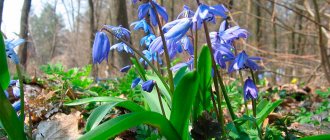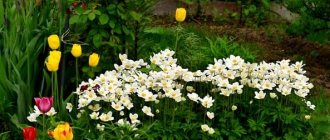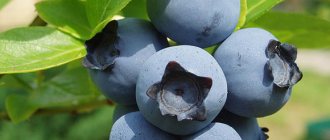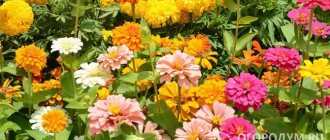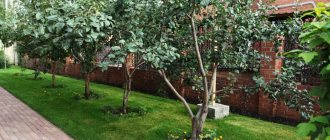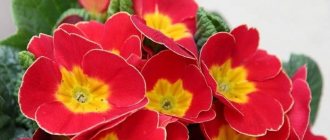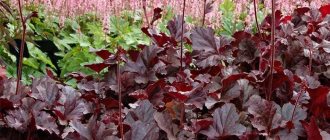Adonis (adonis, starodobka) belongs to the ranunculaceae family. There are about 45 species of herbaceous annual and perennial plants in this genus. Their natural habitat is temperate climate areas in Asia and Europe. According to legend, The name of the flower comes from the son of the Cypriot king Adonis - he died while hunting from the fangs of a boar, and his blood painted the petals scarlet. An alternative version states that the plant is named after the Assyrian god Adon.
In the material we will provide a detailed description and photo of the adonis flower, give recommendations for planting and growing it, and outline the beneficial properties of the plant.
Description and features of Adonis
Adonis grows in the steppes of Europe with large grass cover, sometimes found in Germany, Switzerland (very rarely, almost disappeared). He prefers black soil, open places, and small elevations. It can grow in some areas on rocks (Crimea), sometimes on the edge or on the lawns of birch groves or oak forests. It is found in Western Siberia, Altai, and the Caucasus, where its flowering period will only last until mid-June.
Poets compare this plant with the sun and spring. In botany, the description will not be so beautiful. Its single lemon flower (4-8 cm) is located at the crown of the stem. In summer, spherical fruits (20 mm) and nuts (30-40 pieces) with a hooked nose ripen. Leaves are brown. The lower ones resemble scales, the others are sessile, divided into narrow lobules. The straight shoot (15-30 cm) is smooth and round in shape. The vertical root is small with shoots, brownish in color.
The plant and its parts are considered poisonous. The Red Book in Russia includes Adonis vernalis for its protection.
It is grown industrially for use in pharmaceutical compositions or for the preparation of medicines. When independently collecting in nature, they do it carefully and selectively (3 stems per m2 must not be touched).
Reasons for disappearance
In the Russian Federation, this flower is widespread and is found in many regions. These include: Siberia, Altai, Bashkortostan, Middle Volga region, Stavropol region and some other areas.
The aerial part of Adonis vernalis is used to make various preparations. It must be cut with a knife or other sharp objects, but in no case should it be pulled out by the roots. When collecting, it is also necessary to leave one or two plants per 1 square meter. The fact is that Adonis reproduces by rhizomes, and if collected in the wrong way, the plant is destroyed. Partly for this reason, the natural habitats of Adonis are being greatly reduced. In this regard, Adonis vernatum was listed in the Red Book. In order to allow this medicinally important plant to grow, harvesting is prohibited in some places for several years.
Types and varieties of Adonis
Adonis differs by type: annual and perennial.
Annuals
The growing season of such a plant lasts one season.
Summer (aestivalis)
Other names are also known: ember in the fire or pheasant's eye. Its smooth stems (10-50 cm) with grooves can be different: branched, straight or simple. Leaves, consisting of two or three lobes, are of the following types: sessile at the top, petiolate at the bottom. Flower size 2-3 cm. Red perianth with a dark central spot. The flowering period is all summer.
Autumn (annua)
Sometimes called Adonis annua. Grows up to 30 cm. The leaves are thin, cut in an alternate arrangement. The flowers are light yellow or deep red (1.5 cm), closed at the top. Their central part is dark. Cultivated artificially since 1596.
Perennials
For several years they grow in one place and do not change their properties. They have periods of development and rest.
Volzhsky (volgensis)
The inflorescence is lemon and the sepals are purple. There are few shoots from the thick root. Height 30 cm. It begins to branch from half the stem. Before the first inflorescence appears, there is frequent pubescence on the leaves and stems, then it thins out. The cut leaf curls towards the ground.
Amur (amurensis)
Grows in the Far East. The first to appear are yellowish-golden large flowers (5 cm). Then feathery leaves with petioles. During the blooming period, the plant's growth is 12 cm, later 35. It belongs to the forest species, flowering lasts almost 20 days. Based on it, many varieties with different shades have been bred.
| Variety | Flowers |
| Ben Ten | Velvet white. |
| Sandanzaki | Yellow, protective-colored petals in the middle, semi-fluffy. |
| Hinomoto | The front part is protective bronze, the lower part is coral. |
| Pleniflora | Straw with greenery, shaggy. |
| Ramosa | Red-chestnut, fluffy. |
Siberian (sibirica)
Rich golden (6 cm) flower. Grows up to 60 cm, leaves are pinnately divided. Blooms in late spring or June.
Fluffy (villosa)
For growth, it chooses the edges of birch groves or flat steppe. It has single, densely pubescent stems (15 cm). First, lemon flowers appear, then triangular or oval-shaped leaves begin to grow. During this period, the pubescence decreases, and the height reaches 30 cm.
Golden (chrysocyathus)
A very rare flower, included in the International Red Book. Healthy and highly valued in design.
Turkestan (turkestanicus)
On one bush there are simultaneously ovaries, buds and flowers (4-6 cm). The color of the petals of the inflorescence is of two shades: the outer part is light blue, the inner part is orange-yellow. The above-ground parts of the medicinal plant are covered with curly hairs.
Mongolian (mongolica)
Typically grows in unused pastures. The bush consists of 30 shoots. The white flower (5 cm) blooms first. Sepals are lettuce with a lilac tint. The leaves are sessile in the middle, the lower ones are reduced.
Spring (vernalis)
Artificial breeding of this species began in the 16th century for decorative and medicinal purposes. A thick, small rhizome produces many branched brown shoots. During the flowering period, the height is 5-20 cm, after 40-60. The foliage is finger-like, cut into narrow lobes. Yellow flowers (7 cm) consist of 12-20 glossy petals, which appear at 4-6 years of age in April.
Growing Adonis from seeds
Sowing seeds is slightly different for annuals and perennials. Annuals are planted in the fall (November) in the garden to a depth of 1-2 cm. Germination may persist for a short time, so it is better to use recently collected ones. Store-bought seeds are sown in a greenhouse in the spring.
Perennials are planted in containers in the fall and then placed in a cool place. In winter, if there is snow, they are placed in a snowdrift.
The best seeds can be obtained from plants that are 6-7 years old.
It is advisable to prepare the soil for sowing by mixing sand, turf soil and manure in a ratio of 2:1:1. The first shoots usually appear after the air warms up and reaches +20 °C. However, there are seeds that may take a whole year to germinate.
Seedlings need bright light, but it must be diffused and must be protected from direct rays. Irrigation and careful loosening are performed daily. The seedlings are thinned out, leaving a distance of 15-20 cm.
If there is little time left before the transplant, it is better not to do this.
Transplanting Adonis seedlings into open ground
Caring for and planting plants in open ground is a simple procedure. Usually strong and already grown sprouts are planted. Depending on when the seeds sprout, the time of transplantation is determined. It must be remembered that in order for a flower to winter safely, it needs to take root well, and this takes 4 months.
A great place in the garden for Adonis would be one where there is plenty of sunlight in the morning and shade in the afternoon. For abundant flowering, the soil must contain a lot of fertilizers and lime, acidity 7.0-7.5 pH. The distance between seedlings is left 25-30 cm. The prepared hole must be deep enough for the root so that it does not bend. After planting, water and cover. In the first year after, it usually does not bloom due to its slow development.
Recipes for various diseases
Insomnia
Collection 1. Pour crushed Adonis herb with 40% alcohol or vodka in a ratio of 1:10. Leave in a dark place for 10-15 days. Used as a sedative and mild hypnotic, 15-20 drops 3 times a day.
Myositis
Collection 1. Pour 7 g of dry Adonis spring herb with 1 glass of boiling water, wrap and leave for 1 hour. Drink 1 tablespoon 3 times a day for joint and muscle pain. After each month of treatment you need to take a break for 10 days.
Convulsions
Collection 1. Pour 1 tablespoon of Adonis into 1.5 cups of boiling water, leave for 2 hours in a dark place, and then strain. Take the infusion 1 tablespoon 3 times a day.
Chronic heart failure
Collection 1. Pour 2 tablespoons of chopped Adonis herb with 1 glass of boiling water, leave for 30 minutes, strain. Take 1 tablespoon 3 times a day.
Caring for Adonis in the garden
Adonis is an unpretentious plant, so it does not require special care. The following procedures must be carried out:
- regular watering, preventing both drying out and stagnation of moisture;
- periodic loosening to ensure access of air and water to the roots;
- regular application of fertilizers (complex, manure) before flowering and at the end of summer;
- Blooming inflorescences are not picked during the first 2 years so as not to damage the renewal buds;
- shelter for the winter.
Possible diseases and pests, ways to get rid of them
Adonis (flower), the photo and description of which is presented in the material, belongs to poisonous plants. And most types of pests do not attack it. But sometimes the plant is attacked by slugs and snails. These parasites are visible to the naked eye, and they not only eat the green parts of the crop, but also spread fungal and putrefactive diseases.
To get rid of mucus, you will need to collect them manually, and it is better to do this in the morning, and then destroy them away from the flowerbed. You can also place crushed egg or nut shells, coffee grounds or mustard powder under the bushes. These products will create a natural barrier to keep slugs and snails away.
Adonis has a strong immune system, and in rare cases he may be susceptible to the following diseases:
| Name | Causes and symptoms | Treatment methods |
| Rot | A plant can get sick if it is watered too often or if it is planted in an area with poor drainage. The disease manifests itself by rotting of leaves and shoots. | For treatment, you will need to remove the affected parts of the plant, and then treat the cut areas with crushed charcoal. In the future, you will need to normalize watering, or transplant the crop to a more suitable area. |
| Fusarium | A fungal disease that causes leaves to turn yellow and flower stalks to fall off. | To treat fusarium, you will need to treat the crop with a fungicide, for example, “Fitosporin” or “Phytocid”. |
The advantages of Adonis include undemanding soil and strong immunity. Also, the flower, the photo and description of which is presented in the article, looks attractive and fits into any landscape, and at the same time quietly coexists with other crops. The disadvantages include low seed germination and the need for frequent watering.
Adonis Reproduction
The plant is propagated in two ways: seedlings and dividing the bush. The first option is growing from seeds. The second can be applied to those bushes that are 5 years old or more. This is usually done in early autumn. Carefully dig up the bush and tear it into several parts so that each one contains a root and at least 2 buds. It is advisable to leave the parts large to facilitate the rooting process. The cut site is disinfected and immediately planted.
Caring for them is the same as for young seedlings. If flowers appear on such a bush, they must be carefully removed. The plant should take root well in its new location before the onset of cold weather.
The beautiful legend of the adonis
The beautiful goddess of love Aphrodite fell in love with the handsome young man Adonis. She warned him that he was destined to die while hunting. To protect her beloved from danger, Aphrodite spent all her time with him, hunting small game - hares, shy chamois and deer, and avoiding lions, wild boars and bears. When the goddess left Adonis, she tearfully asked him to remember the prediction and take care of himself.
One day the young man went hunting himself. His hunting dogs picked up the trail of a wild boar and chased the animal away with loud barking. Adonis rushed after the prey, wanting to pierce the boar with his spear, but the beast mortally wounded Adonis with its huge tusks. The young man died.
Upon learning of the death of her beloved, Aphrodite cried bitterly. She went into the forest to look for the body of Adonis. Seeing the dead young man, the goddess ordered a delicate flower to grow at the site of his death in order to perpetuate the memory of her beloved.
To summarize, we can say that Adonis vernalis is a wonderful, beautiful plant that has a wide range of medicinal properties.
Mr. Summer resident recommends: medicinal properties of Adonis vernalis
Of all the types of Adonis, the spring one has known medicinal properties. It contains cardiac glycosides, vitamin C, Mg, K, Ca, Mg, Fe salts and tannins. They determine the use of the plant in folk and official medicine:
- Circulatory disorders, nervous system disorders, epilepsy, hypertension, etc. Improves heart function, blood pressure normalizes, shortness of breath and swelling of the legs decreases.
- Kidney diseases. As a diuretic for urolithiasis.
- Whooping cough, chronic bronchitis. Has a depressing effect on the cough center.
- Joint pain, rheumatism.
- Glaucoma, hepatitis.
Decoctions, infusions, teas and alcohol tinctures are prepared from it. The combined use of adonis with other medicinal plants has proven well. Medicinal mixtures are prepared for kidney diseases, hypertension, and in the complex treatment of hepatitis. In medicine, Adonis is included in some types of tablets (Adonis-bromine) and mixtures (Bekhterev), homeopathic preparations.
Chemical composition
The grass contains many trace elements that are beneficial to the human body.
The chemical composition includes:
- cardiac stimulant glycosides (cymarin, strophanthin, acetyldigitoxin, adonitoxin);
- phytosterol, which is a component for the construction of cell membranes (vitamin D);
- vegetable tanning components that prevent decay processes;
- one of the important vitamins is ascorbic acid (vitamin C);
- yellow pigment carotene, which is converted into vitamin A in liver cells;
- choline is a vitamin similar to B vitamins;
- coumarins are substances similar in their action to vitamins of group P;
- organic acids (oxalic, citric, acetic, formic);
- flavonoids are substances that have a vascular strengthening effect and stabilize the functioning of the gastrointestinal tract.
Adonis contains many beneficial microelements



